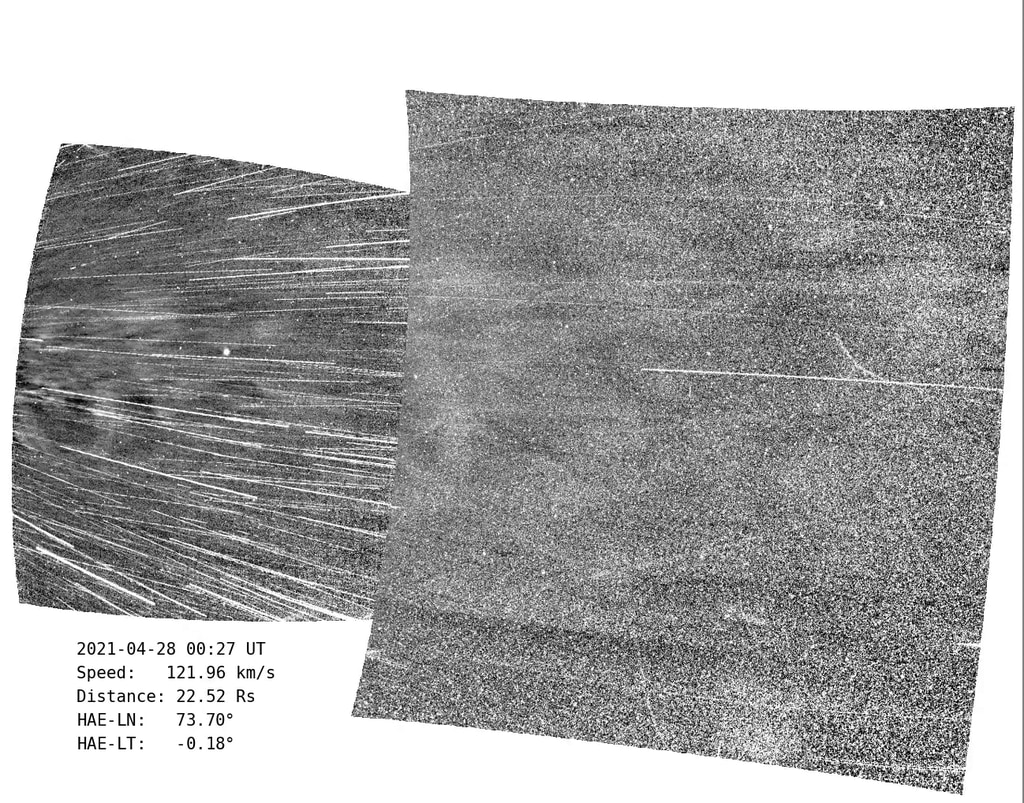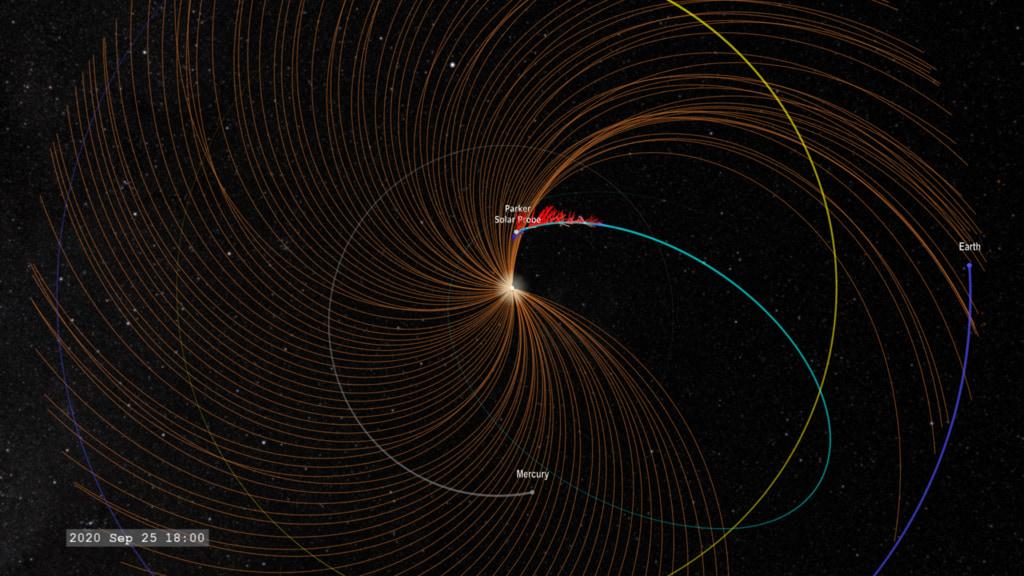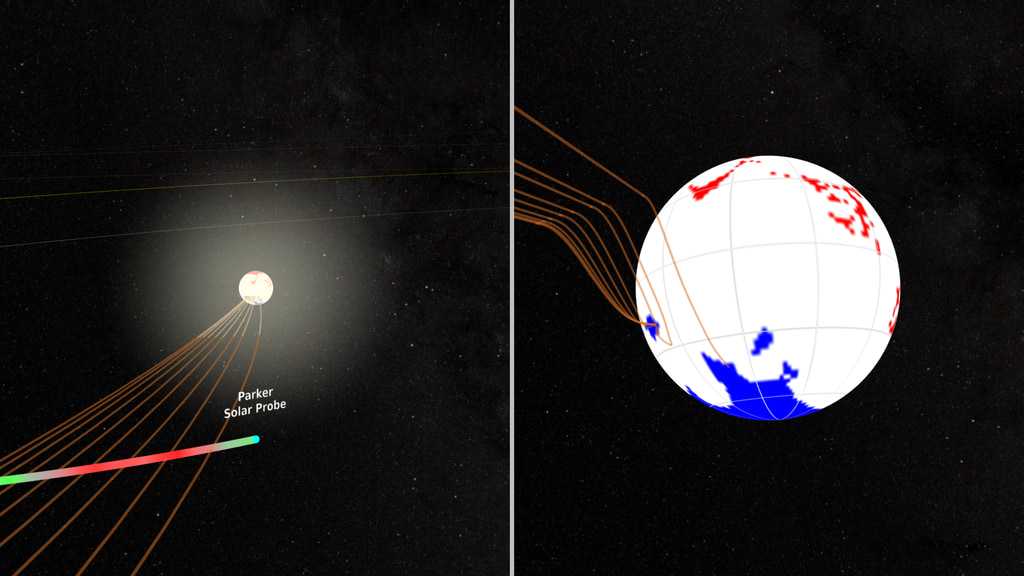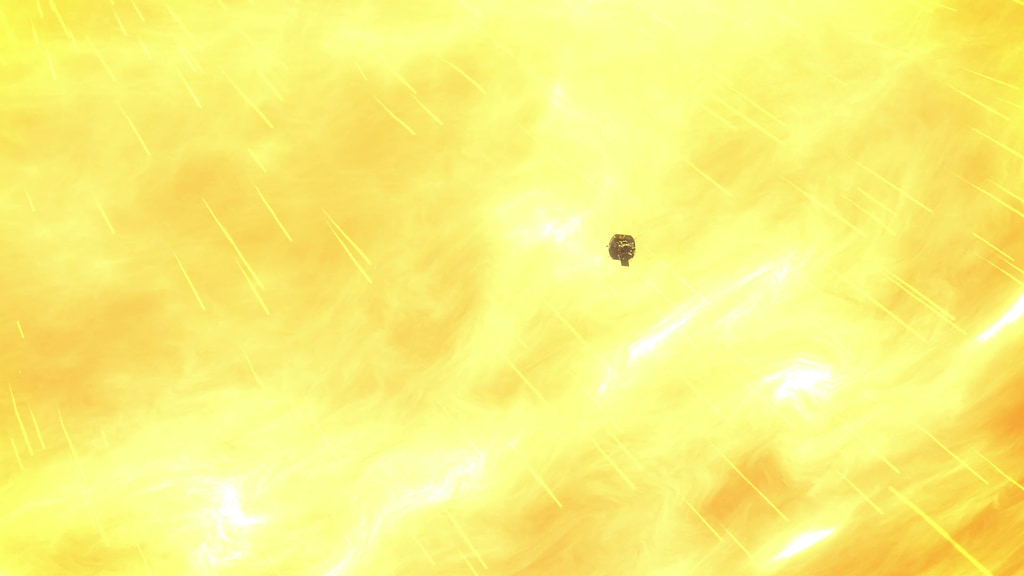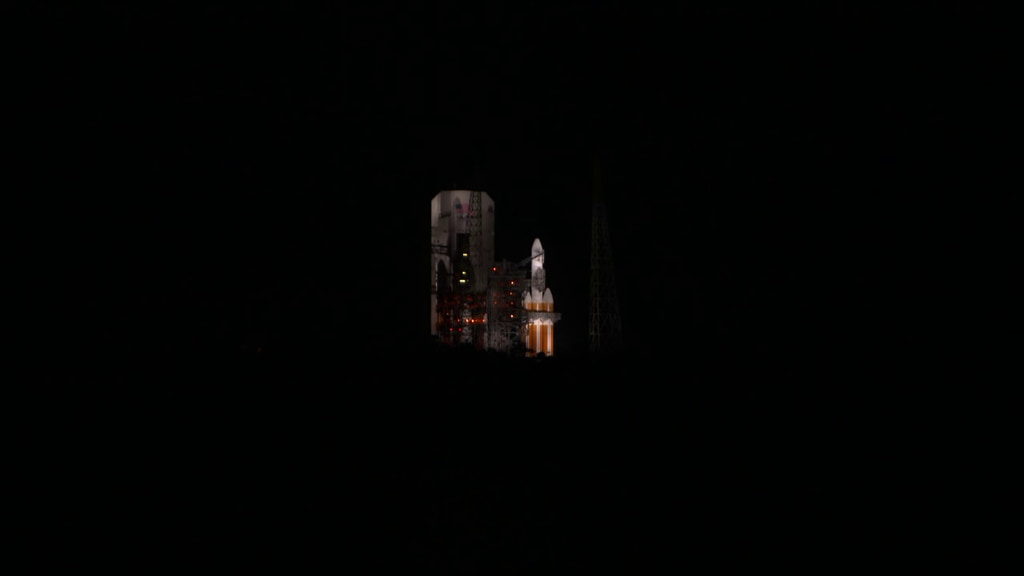Animation: Origins of Switchbacks
On recent solar encounters, Parker Solar Probe collected data pinpointing the origin of zig-zag-shaped structures in the solar wind, called switchbacks. The data showed one spot switchbacks originate is at the visible surface of the Sun – the photosphere.
By the time it reaches Earth, 93 million miles away, the solar wind is an unrelenting headwind of particles and magnetic fields. But as it escapes the Sun, the solar wind is structured and patchy. In the mid-1990s, the NASA-European Space Agency mission Ulysses flew over the Sun’s poles and discovered a handful of bizarre S-shaped kinks in the solar wind’s magnetic field lines, which detoured charged particles on a zig-zag path as they escaped the Sun. For decades, scientists thought these occasional switchbacks were oddities confined to the Sun’s polar regions.
In 2019, at 34 solar radii from the Sun, Parker Solar Probe discovered that switchbacks were not rare, but common in the solar wind. This renewed interest in the features raised new questions: Where are they coming from and how do they form and evolve? Were they forged at the surface of the Sun, or shaped by some process kinking magnetic fields in the solar atmosphere?
The new findings, in press at the Astrophysical Journal, finally confirm one origin point near the solar surface.
More information here.
Data from Parker Solar Probe has traced the origin of switchbacks – magnetic zig-zag structures in the solar wind – back to the solar surface. At the surface, magnetic funnels emerge from the photosphere between convection cell structures called supergranules. Switchbacks form inside the funnels and rise into the corona and are pushed out on the solar wind.
Credit: NASA GSFC/CIL/Jonathan North
Flying through several ‘switchbacks’ – magnetic zig-zag structures in the solar wind – close to the Sun, Parker Solar Probe gathered data allowing it to determine the switchbacks’ origins.
Credit: NASA Goddard/CIL/Jonathan North
Flying through several ‘switchbacks’ – magnetic zig-zag structures in the solar wind – close to the Sun, Parker Solar Probe gathered data allowing it to determine the switchbacks’ origins.
Credit: NASA Goddard/CIL/Jonathan North
For More Information
Credits
Please give credit for this item to:
NASA's Goddard Space Flight Center Conceptual Image Lab
-
Producer
- Joy Ng (KBR Wyle Services, LLC)
-
Animators
- Jonathan North (KBR Wyle Services, LLC)
- Adriana Manrique Gutierrez (KBR Wyle Services, LLC)
Missions
This page is related to the following missions:Release date
This page was originally published on Tuesday, December 14, 2021.
This page was last updated on Wednesday, May 3, 2023 at 1:43 PM EDT.
